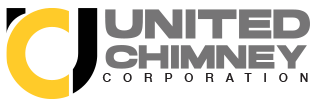Understanding NFPA Guidelines for Chimney Safety
When it comes to chimney and venting system safety, following the National Fire Protection Association (NFPA) guidelines is essential. The NFPA sets industry standards to reduce fire risks, ensure proper ventilation, and maintain the structural integrity of chimney systems in both residential and commercial settings.
Whether you’re a homeowner, property manager, or building developer, understanding these guidelines can help you stay compliant, prevent hazards, and extend the lifespan of your chimney and exhaust systems.
In this guide, we’ll break down the key NFPA regulations, what they mean for your property, and how regular inspections and maintenance keep your chimney safe and up to code.
What is NFPA 211? The Standard for Chimney Safety
NFPA 211 is the primary national safety standard for chimneys, fireplaces, vents, and solid-fuel-burning appliances. It provides best practices for installation, maintenance, and inspection to prevent fire hazards, carbon monoxide risks, and structural failures.
Key NFPA 211 Guidelines:
✔️ Annual Inspections Required – All chimneys, fireplaces, and vents should be inspected at least once a year, even if they aren’t frequently used.
✔️ Regular Cleaning & Maintenance – Creosote and soot buildup must be removed to prevent chimney fires and poor airflow.
✔️ Proper Venting Design & Materials – Chimney flues must be correctly sized and made of approved fire-resistant materials.
✔️ Clearance from Combustible Materials – Chimneys must maintain safe distances from walls, insulation, and structural components to reduce fire risks.
✔️ Structural Integrity Requirements – Chimneys and venting systems must be structurally sound, with no cracks, deterioration, or blockages.
✔️ Carbon Monoxide Safety – Proper ventilation is required to prevent carbon monoxide buildup, a silent but deadly hazard.
Why It Matters:
NFPA 211 is widely adopted by building codes, fire departments, and insurance companies, meaning non-compliance can lead to fines, liability risks, or denied insurance claims in case of an incident.
NFPA Chimney Inspection Levels Explained
The NFPA outlines three levels of chimney inspections based on the condition and use of the chimney system.
Level 1: Basic Annual Inspection
🔍 Recommended if the system has no major changes and is in regular use.
✅ Includes a visual inspection of accessible chimney parts to check for damage, obstructions, and creosote buildup.
✔️ Suitable for routine maintenance.
Level 2: Real Estate Transfers & Structural Changes
🔍 Required when buying/selling a home, after a chimney fire, severe weather damage, or a change in fuel type.
✅ Involves a video chimney scan to check for hidden cracks, liner damage, or blockages.
✔️ Necessary for commercial buildings, multi-story properties, or after significant chimney modifications.
Level 3: Hazardous Conditions or Structural Damage
🔍 Conducted when serious damage or a safety concern is suspected.
✅ Requires partial chimney disassembly to inspect concealed areas.
✔️ Performed when severe damage, leaks, or collapse risks are detected.
When to Get an Inspection:
📆 Annually – Regular maintenance & fire prevention.
🏠 Before buying/selling a property – Ensures compliance and safety.
🔥 After a chimney fire or extreme weather event – Detects hidden damage.
🔄 When switching fuel types – Adapts the chimney system for new heating appliances.
NFPA Venting & Clearance Requirements
The NFPA sets strict venting standards to ensure that heat, smoke, and gases are safely expelled from your chimney or exhaust system.
Key Requirements:
🔥 Proper Chimney Height – Chimneys must extend at least 3 feet above the roofline and 2 feet higher than any part of the building within 10 feet.
🔥 Minimum Flue Size – The flue must be correctly sized for the fireplace or heating appliance to ensure proper airflow.
🔥 Liner Requirements – Clay, metal, or cast-in-place liners are required to protect the chimney walls from heat and gas exposure.
🔥 Clearance from Combustibles – Minimum clearance distances must be maintained between chimneys and wood framing, insulation, or other combustible materials.
🔥 Carbon Monoxide Venting – Gas and solid-fuel-burning appliances must be properly vented to prevent CO buildup inside the property.
Failure to comply with these guidelines can lead to fire hazards, reduced efficiency, or dangerous exposure to toxic gases.
How United Chimney Ensures NFPA Compliance
At United Chimney, we specialize in NFPA-compliant chimney and venting solutions for residential, commercial, and multi-story buildings. We take the stress out of chimney safety with turnkey services that handle everything from inspections and cleaning to repairs and installations.
✔️ Inspections – Our team performs Level 1, 2, and 3 inspections using video scanning and draft testing.
✔️ Expert Cleaning Services – We remove creosote, soot, and debris to prevent fire risks and improve efficiency.
✔️ Structural Repairs & Relining – We repair cracks, leaks, and deteriorating liners to keep your system safe and compliant.
✔️ Compliance with NFPA & Local Building Codes – We ensure every project meets the latest safety standards.
Stay Safe & Compliant—Schedule Your NFPA Inspection Today!
Understanding NFPA guidelines isn’t just about compliance—it’s about protecting lives, property, and ensuring your chimney operates safely year-round. Whether you need an inspection, cleaning, or venting system upgrade, United Chimney is here to help.
📩 Don’t wait until there’s a problem. Schedule your NFPA-compliant chimney inspection today!


